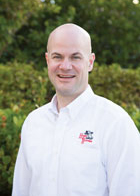
It’s been estimated that 2 percent of America’s cows are now milked with robots. That number climbs to nearly 15 percent when looking north of the border. The reasons vary for those who have or are looking to install robots. Improved quality of life for cows and people, reducing labor need or improved labor allocation, and simply modernizing the dairy farm rank among the many considerations.
“If you are looking to install robots because you don’t like milking cows, that’s the wrong answer,” said Kevin Coffeen, a vice president with BMO Harris Bank. “Robots are a tool to help you manage your operation,” said the banker who grew up actively working with cows on his family’s dairy farm.
As for preparing for the journey with robots, “To be honest, most of the robot dairies we financed have been a three-year journey from the start of the conversation to the opening day when cows are milked for the first time,” expressed Coffeen. When making the investment, “we are amortizing the loan for 10 years for the 30-plus robot farms we have worked with,” he said. That seven- to 10-year amortization would be considered an intermediate liability, while barns are a long-term liability with longer repayment schedules. Coffeen went on to explain that most automated milking system manufacturers suggest that robots will have 10 to 20 years of useful life if the dairy farmer buys the company’s service package and keeps the automated milking systems well-maintained.
“There hasn’t been a large labor savings when installing robots,” Coffeen went on to say. “The new technology does change what labor does each day with the cows, though,” he said, noting that there is more time for cow care. “The big labor savings start at about six robots,” advised the banker who has personally helped clients move cows at a number of robot startups.
“My parents can still be involved in the dairy,” added Larry Meyer, talking of his parents who are entering their fifth decade of dairy farming. “The labor activity isn’t as intense with robots,” said the Chilton, Wis., dairyman who is a partner in Jenlar Holsteins and Brown Swiss.
“However, robots are a little like babies, you are always on call,” added Meyer, speaking of alerts sent by the automated milking systems when issues arise.
Cows express themselves
“We are seeing farms that go from tie stalls to sand-bedded freestalls with robots typically gain 10 pounds per cow,” said Coffeen when discussing improvements to cow comfort and the added milking frequency afforded by robots. “To be fair, if a Holstein herd is milking 100 pounds per day prior to the move, you may not get 10 pounds of additional milk.”
“Robots took the lid off our cows’ ability to fully express their genetic potential,” said Randy Nigh of Viroqua, Wis., who is new to robots. “We are at 2.7 visits per cow to our robotic milking system. We’ve been higher, we’ve been lower,” said the dairyman who installed robots following a devastating barn fire. “When it comes to milking visits, though, any disruption in the barn reduces visits to the robot,” he went on to say.
“We switched to robots in March 2017,” added Meyer. “The activity collars made a big difference and took our reproduction to another level. We have 43 animals due to calve in the next 60 days in our 120-cow herd. The 43 animals include cows and heifers,” said Meyer due to the improved activity monitoring to catch cows in heat.
Best robot cows
“Teat placement matters,” said Coffeen. “When the robot is searching for teats, milking isn’t taking place. Remember, we must get the most milk, in the shortest time, with the highest level of components possible.”
“A very efficient cow works best for us,” added Meyer. “That invisible cow we all strive for on a dairy. She must get to the robot efficiently (walking),” said Meyer.
“More specifically, we look at milking speed, temperament, teat placement (the rear teats can’t be too close), and teat length (we need a little length for attachment). In rare instances, the laser has a challenge finding black teats.”
“Uniform size has mattered to us,” said Nigh. “Personally, I like a full-size Holstein producing high levels of milk. Remember, the prep time (prior to milking) is the same for each cow.”








